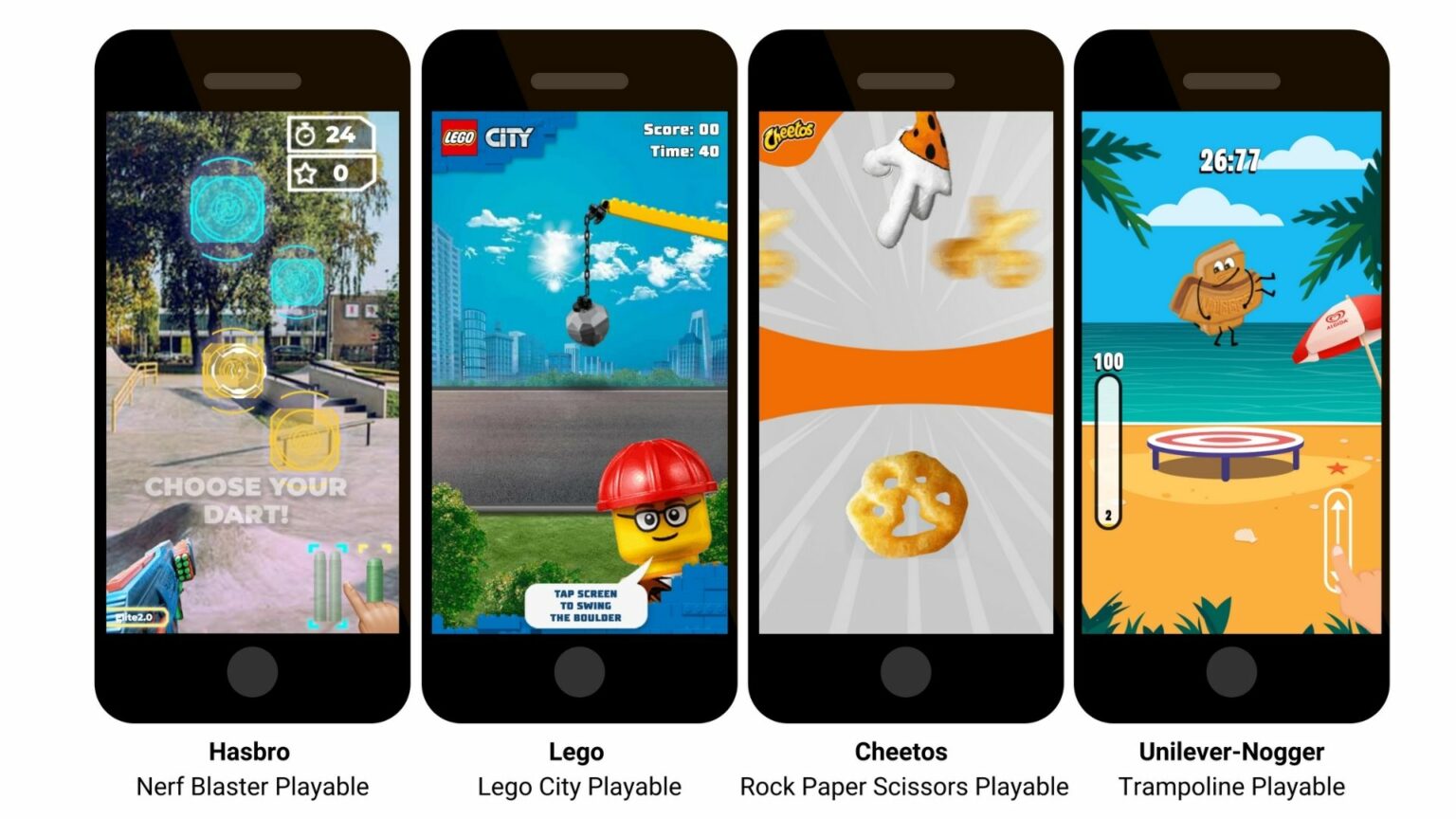Unity’s rise has redefined the gaming landscape. Originally created for indie developers, the intuitive engine has fueled growth on an immense scale. Now valued at over $6 billion dollars, Unity’s accessible workflow and multi-platform publishing lead the industry — commanding a 60% market share amongst game creators looking to tap into its disruptive, real-time graphic rendering capabilities.
As Unity has added capabilities enabling high-end visuals and improved performance optimizations, usage has expanded. Larger game development studios with history tied to proprietary engines or Unreal are now actively utilizing Unity — recognizing associated boons in rapid iteration times during production cycles that allow for cost savings which can be allocated toward polish. Titles of substantial budget and scope are noticeable: Electronic Arts, Microsoft, and even Activision studios incorporating Unity tech.
The thesis is evident — more blockbuster franchises recognize Unity’s versatility across PC, consoles, mobile. As indie darlings rise to prominence on the back of their Unity-crafted games to compete head-on with established players, Unity ensures its viability as a dominant force in the industry. This begs a future where a majority of gaming content relies on Unity engine to drive innovation forward. The engine has become advanced enough to power both indie breakouts and the highest budget AAA games; game development studios are taking notice.
Unity’s Advantages For Large Productions
Multiplatform publishing
One major advantage of Unity game development is that it lets developers easily make games for many platforms. Like Playstation, Xbox, Nintendo Switch, mobile phones, websites, and more. Large studios want their big games to reach as many gamers as possible. So Unity saves them time and money since the games can launch on so many platforms.
Iteration speed
Another big Unity game studio benefit is speed. Making 3D video games with lots of graphics, characters, and details is complicated. It can take many years for big studios to make one game. But Unity engine has tools that let designers quickly test ideas and make changes. Instead of waiting for new builds, developers can update right inside Unity engine to see what works best. This creative flexibility speeds up how quickly big games can be made.
Artist/designer friendliness
Unity is also designed for artists and game designers. Expert coders are still important, but Unity makes game creation more visual with its user interface. Artists can take the lead importing 3D models into scenes, arranging characters, customizing gameplay logic with fewer lines of hard code. This makes collaborating easier for large creative teams with different roles. More gets done in unity game development in a shorter period of time.
Cost savings
Most major studios spend millions of dollars to make AAA games over several years. Unity helps them save money that can go into polishing big releases. Features like the Asset Store allow purchasing professional 3D models, scripts, environments. Instead of making absolutely everything custom like studios used to do, Unity hub lets them buy cost-effective high-quality assets.
Case Study #1: EA’s Star Wars Titles
Electronic Arts is embracing Unity for major Star Wars gaming projects. One prominent example is Star Wars Jedi: Fallen Order developed by the EA studio Respawn Entertainment. This story-driven 2019 action-adventure title featured fluid lightsaber combat and vibrant, cinematic set pieces across multiple alien worlds brought to life by Unity’s graphics.
Jedi Fallen Order
Fallen Order utilized custom extensions on top of Unity to enable its impressive visuals and effects like photogrammetry scanning real-world objects for in-game textures. But Unity’s core speed and workflow efficiency empowered rapid prototyping. Level designers could quickly block out environments and gameplay ideas without waiting for engineers. This agility brought Jedi Fallen Order from concept to shipped product in under 3 years – lightning fast for modern AAA games.
Galaxy of Heroes mobile game
On mobile, EA leveraged Unity’s cross-platform strengths to make Star Wars: Galaxy of Heroes accessible on iOS and Android devices. By using Unity’s mobile SDK package, EA could develop and frequently update the collection RPG quickly to attract a casual gaming audience through their phones. Avoiding proprietary engine hurdles enabled Galaxy of Heroes to become EA’s most successful mobile title ever, on track to gross $1 billion.
Benefits Unity brought
Here are the benefits of EA utilizing Unity for Star Wars: Galaxy of Heroes:
- Cross-Platform Publishing: Unity allowed building Galaxy of Heroes compatible on both iOS and Android. No proprietary engine restrictions.
- Rapid Iteration: Unity’s mobile SDK template accelerated development and frequent updates to keep players engaged.
- Audience Accessibility: Reached a wider casual gaming audience on the most popular phone platforms through Unity.
- Record Revenue Generation: Mobile-first focus enabled by Unity led to unprecedented financial success for an EA title, making over $1 billion.
- Avoiding Common Engine Hurdles: Working around proprietary engine limitations via Unity unlocked feature potential and quicker pivots.
- Streamlined Workflow: Unity architecture simplified the process of publishing new builds to update Star Wars fans on multiple mobile platforms simultaneously vs siloed development.
- Lowered Friction For Innovation: Unity’s democratized game design principles encouraged taking creative risks that resonated with mobile gamers on a wider scale than seen through proprietary engines focused on high-end console/PC gaming only.
Case Study #2: Microsoft’s Halo Franchise
As one of gaming’s most iconic AAA franchises, Halo’s main series of flagship Xbox titles boast dazzling technical prowess powered by proprietary engines tailored specifically to realize Master Chief’s sci-fi universe. However, when exploring ancillary Halo projects beyond the core storyline games, Microsoft tapped into Unity’s flexibility.
Halo: Waypoint app
The official Halo Waypoint mobile app leverages Unity to extend the franchise’s reach. Waypoint provides fans halo lore, news updates, behind the scenes content and stats tracking. Building it natively for iOS and Android would have required significant dedicated engineering investment. Instead, Microsoft’s studio leveraged Unity’s cross-platform publishing which handled much of the heavy lifting to make Waypoint accessible on phones. Customizing the app’s interface and connecting to Halo’s data services was streamlined through Unity, launching the app swiftly.
Appeal of Unity for ancillary projects
Accessibility has also led Microsoft to use Unity for emerging platforms as Halo aims to engage fans through new technology. Halo Recruit saw an early VR demo built in Unity to showcase the brand on Windows Mixed Reality headsets. And Halo Arcade demonstrates the engine powering ambitious concept projects translating the IP to arcades with immersive coin-op cabinets tailored for localization needs in China.
While mainline sequels raise the bar for AAA graphical fidelity using internal tech, Microsoft taps into Unity’s democratized development capabilities when extending Halo to other platforms. Doing so provides cost-effective audience expansion, unlocking creativity by progressing the sci-fi universe through bundles of smaller scale ventures vs betting all resources solely on big-budget tentpole game releases. For Microsoft, Unity fulfills franchise potential in between flagship installments.
Case Study #3: Activision’s Call of Duty
With Call of Duty cementing itself as one of gaming’s most valuable franchises, Activision continuously seeks new ways to fuel the billion dollar ecosystem surrounding its esteemed first-person shooter series. While console and PC remain the brand’s stronghold showcasing AAA graphical advancements, Activision leverages Unity as integral technology enabling its successful expansion into mobile.
Recent mobile titles
Recent years have seen mobile emerge as a top grossing platform for gaming. Activision aimed to penetrate the market further through releasing tailored Call of Duty games for smartphone devices. Call of Duty: Mobile and Call of Duty: Warzone Mobile were built in Unity to make quick strides reaching mobile gamers and the key revenue opportunity present.
Enabling mobile ecosystem
Unity’s cross-platform tools ensured Call of Duty’s signature fast-paced shooting, customizable loadouts and social competitive modes could be encapsulated in scaled down mobile gameplay loops. Optimized development for iOS and Android granted tapping into the platform’s vast install base. And frequent post-launch updates with new maps, weapons, events keeps engagement high thanks to Unity’s iteration velocity.
The result is a widening Call of Duty ecosystem granting Activision financial success off not just premium console/PC releases but also the ability to monetize ongoing casual play on phones. Call of Duty: Mobile became 2020’s top grossing mobile title at over $480 million earned. With Warzone Mobile set to bring its hit free-to-play Battle Royale mode to billions more next, Unity powers Activision capitalizing on mobile seasons between mainline sequels to drive record profits.
All while keeping the Call of Duty brand atop the zeitgeist across console, PC and mobile thanks to Unity effectively streamlining development. Activision’s multi-platform approach shows franchises sustaining success through diversification; Unity unlocks endless revenue channels.
Other Popular Games that Use Unity Engine
There are some popular Unity games to pay attention.
Hollow Knight (2017)
Hollow Knight is a 2D adventure game about exploring an underground bug kingdom. The art and music create a mysterious mood. Unity’s flexible 2D tools allowed the small team to build an expansive world with fun platforming and combat.
Cuphead (2017)
Cuphead uses 1930’s style hand-drawn animation. You battle crazy bosses and dodge attacks. Unity’s customization lets developers replicate a retro cartoon look. The complex boss fights were easier to create.
Escape from Tarkov (2016)
Escape from Tarkov is an intense, realistic shooter about getting loot and escaping. Unity’s graphics and physics tools enabled complex game mechanics with different ammo and injuries to give hardcore gameplay.
Oxenfree (2016)
Oxenfree is a supernatural teen drama where choices matter. Stylized 2D art and realistic dialogue hide horrors. Unity streamlined development so the small team could focus on unique conversation systems and horror design.
Outer Wilds (2019)
In Outer Wilds, you uncover an ancient alien mystery before a time loop restarts the solar system. Unity’s openness allowed the game to break conventions like timed progression while retaining accessible exploration gameplay.
Rust (2018)
Rust is about survival against nature and other players. Detailed electricity and building systems enable complex social gameplay. Unity’s component-based structure facilitated the variety of gameplay emergent from detailed mechanics and sandbox world.
Indie Origins, Blockbuster Potential
Unity made it easy for new developers to start making games. This let lots of small indie studios create unique games that became big hits. Games like Untitled Goose Game and Rocket League. Seeing indie games do well proved Unity engine worked great.
Rocket League switched from another game engine to use Unity instead. Unity let them put Rocket League on more gaming platforms faster. The game got even more popular after the change.
So big brands started also using Unity game development engine. Studios like Activision with Call of Duty mobile games. And Microsoft making Halo apps and VR demos. Unity expanded its tools and graphics power so now it could even work on AAA games. The Unity Asset Store lets studios buy helpful content instead of rebuilding everything from scratch.
Years ago, companies doubted Unity could power top games. They thought only big custom engines from Sony or Epic could handle advanced graphics and worlds. But now Unity proves you do not need a giant technology team. Small teams have made hits with Unity – leading Sony and Microsoft to make their games support it too!
Today Unity helps beginners make simple mobile games fast. Then as they grow, Unity keeps working. More graphics and tools get added over years to turn indie studios into AAA makers. The results speak themselves – so many famous games and apps now use Unity technology. It scales up easily.
With Unity working for small startups and big publishers like Activision too, it is taking over the game industry. The foundation allows teams both big and small to create almost anything imaginable. That is why more and more new games will be “Powered by Unity” in the future. It empowers all ambition!
Unity For Non-Game Industries
Unity’s success in video games has also drawn interest from other industries working with 3D technology. Like movies, car design, architecture, and more. These fields find Unity’s real-time 3D tools helpful to preview work.
Cinema Industry
Filmmakers use Unity to layout scenes with digital characters mixed into real footage. This helps visualize shots before shooting. Artists prototype visual effects concepts to pitch ideas faster. No waiting for test renders. Unity instantly shows the 3D results.
Here is an example table showing some films where Unity has been used:
| Film | Unity Use Case |
| The Mandalorian | Real-time visual effects like digital backgrounds |
| Lion King (2019) | Environment and set visualization |
| Blade Runner 2049 | Pre-visualization of cityscapes |
| Rogue One: A Star Wars Story | Rapid prototyping of battle scenes |
| BMW Short | Fully real-time animated short film |
| Mr. Carton | Animated Academy Award nominee short film |
| Sonaria | Animated film made completely in Unity |
| Neill Blomkamp’s Adam Ep 1 | Experimental film with Unity real-time rendering |
This table shows a sample of films across both live action and fully animated categories that have utilized Unity technology in areas like visual effects, pre-visualization, environment building, animation, and real-time rendering. Major movies like those from the Star Wars franchise have adopted Unity into their production pipelines. There have also been short films and experimental projects dedicated to pushing Unity’s capabilities for filmmaking. Many animators and studios are leveraging Unity’s game engine tools to tell cinematic stories through 3D animation with interactivity in mind. And big directors are prototyping ideas rapidly by leveraging the same technology powering today’s top games.
Automobile Industry
Car companies design vehicles in Unity to quickly try different looks and materials. Architecture firms create 3D building walkthroughs for client tours. Product developers test designs in AR through Unity mobile apps.
Here is a table showing some examples of automotive companies using Unity:
| Company | Unity Use Case |
| Volkswagen | VR showroom experience |
| Porsche | Interactive model customization |
| Toyota | Vehicle viewer mobile apps |
| Volvo | 3D prototype visualization |
| Ford | Vehicle design walkthroughs |
| Audi | Configurable accessories showcase |
| GM | Full car configurators on website |
| BMW | Interactive technology demos |
| McLaren | Augmented reality features brochure |
| Polestar | 3D test drive simulations |
This list indicates how major automotive manufacturers have been leveraging Unity’s 3D capabilities for various applications. Use cases range from virtual reality car showrooms, mobile model viewers, fully configurable options on official websites, VR test drives, augmented reality features demos, and interactive on-screen visualizers for the customization process and design evaluation. Unity helps enable customer experiences and streamline internal workflows. The real-time 3D engine allows rapidly iterating on prototype vehicle designs, testing different configurations, and showing realistic previews rather than waiting on full renders. This table reflects Unity’s growing adoption across forward-thinking automotive companies.
The simple tools mean those without much coding skill can still use Unity. If animating a movie or configuring custom car options, Unity lets teams iterate and collaborate smoothly. It removes friction to try new 3D and AR ideas out.
Just as Unity made game creation accessible, it now helps other industries be creative with interactive 3D. Movies, products, architecture – more fields adopt Unity for easy real-time visualization and previews. Fast iteration means more experimentation payoff. Powerful technology made simple.











